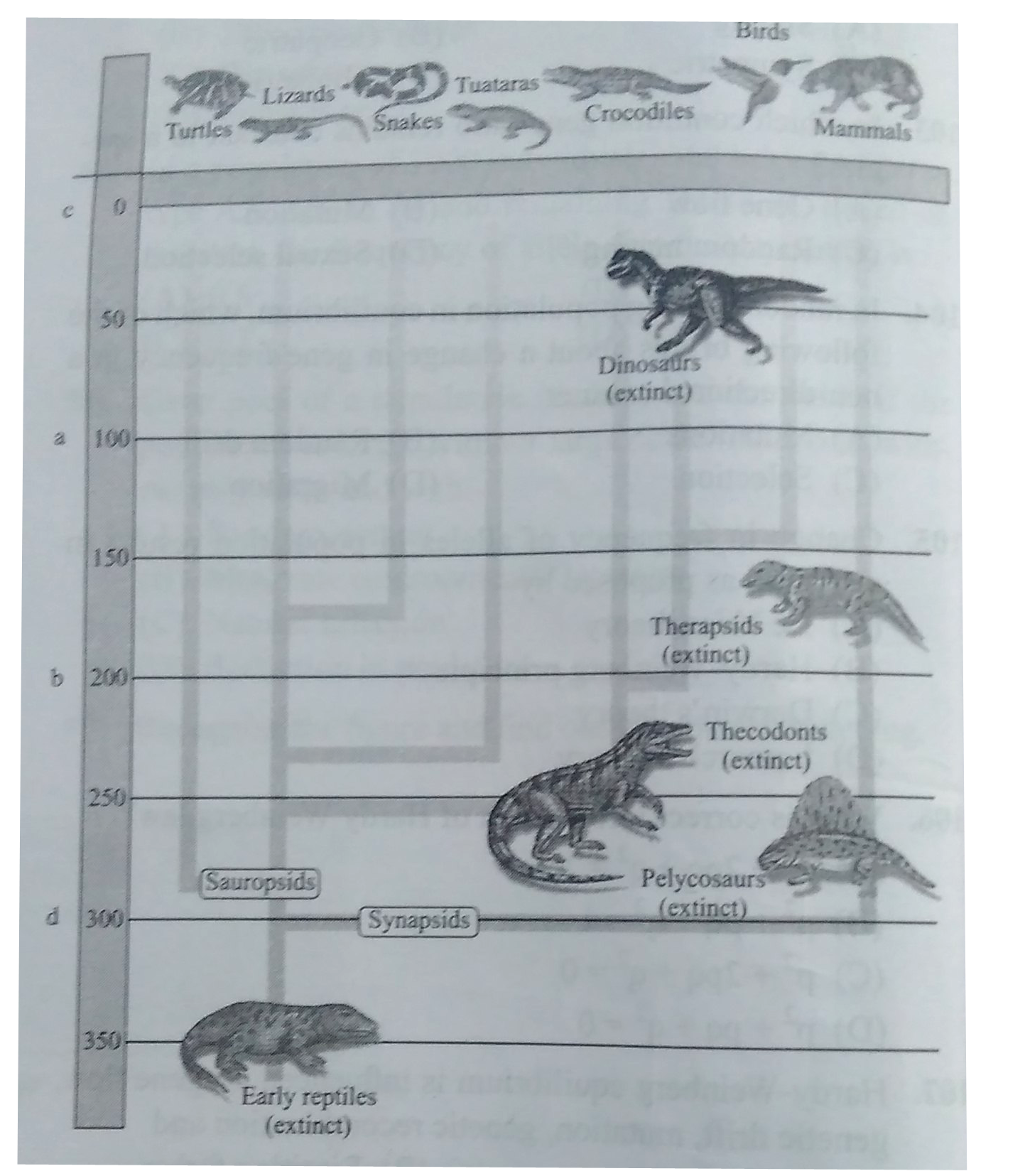Describe the evolutionary history of plant and vertebrates through geological period.
Text Solution
About 2000 million years ago (mya) the first cellular forms of life appeared on earth.
The mechanism of how non-cellular aggregates of giant macromolecules could evolve into cells with membranous envelop is not known.
Some of these cells had the ability to release O2.
The reaction could have been similar to the light reaction in photosynthesis where water is split with the help of solar energy captured and channelised by appropriate light harvesting pigments.
Slowly single - celled organisms became multi-cellular life forms.
By the time of 500 mya, invertebrates were formed and active.
Jawless fish probably evolved around 350 mya.
Sea weeds and few plants existed probably around 320 mya.
We are told that the first organisms that invaded land were plants.
They were widespread on land when animals invaded land.
Fish with stout and strong fins could move on land and go back to water.
This was about 350 mya.
In 1938, a fish caught in South Africa happened to be a Coelacanth which was thought to be extinct.
These animals called lobefins evolved into the first amphibians that lived on both land and water.
There are no specimens of these left with us.
However, these were ancestors of modern day frogs and salamanders.
The amphibians evolved into reptiles.

They lay thick shelled eggs which do not dry up in sun unlike those of amphibians.
Again we only see their modern day descendents, the turtles, tortoises and crocodiles.
In the next 200 millions years or so reptiles of different shapes and sizes dominated on earth.
Giant ferns (Pteridophytes) were present but they all fell to form. coal deposits slowly.
Some of these land reptiles went back into water to evolve into fish like reptiles probably 200 mya (eg. Ichthyosaurs).
The biggest of them i.e. 1)rrannosaurus rex was about 20 feet in height and had huge fearsome dagger like teeth.
About 65 mya the dinosaurs suddenly disappeared from the earth.
Some say climatic changes killed them. Some say most of them evolved into birds.
The truth may live in between.
Small sized reptiles of that era still exist today.
The first mammals were like shrews.
Their fossils are small sized.
Mammals wp.rp. viviparous and protected their unborn young inside the mother.s body.
Mammals were more intelligent in sensing and avoiding danger at least.
When reptiles came down mammals took over this earth.
There were in South America mammals resembling horse, hippopotamus, bear, rabbit etc.
Due to continental drift, when South America joined North America, these animals were overridden by North American fauna.
Due to the same continental drift pouched mammals of Australia survived because of lack of competition from any other mammal.
A rough sketch of the evolution of the life forms their times on a geological scale are indicated in figure.

|
Topper's Solved these Questions
- EVOLUTIONBOOK - KUMAR PRAKASHANCHAPTER - EVOLUTIONEXERCISE - SECTION - B (Difference / Scientific Reasons) (Give differences)
2 Videos
- EVOLUTIONBOOK - KUMAR PRAKASHANCHAPTER - EVOLUTIONEXERCISE - SECTION - B (Difference / Scientific Reasons) (Give scientific reasons)
2 Videos
- ENVIRONMENTAL ISSUESBOOK - KUMAR PRAKASHANCHAPTER - ENVIRONMENTAL ISSUESEXERCISE - Section - F (Multiple Choice Question (MCQs))(MCQs ASKED IN COMPETITIVE EXAM)
22 Videos
- HUMAN HEALTH AND DISEASE BOOK - KUMAR PRAKASHANCHAPTER - HUMAN HEALTH AND DISEASE EXERCISE - Section - F (Multiple Choice Question) (MCQs Asked In Competitive Exam))
33 Videos
Similar Questions
Knowledge Check
Following is given the diagrammatic representation of evolutionary history of vertebrates through geological periods. Identify the geological periods (A,B,C and D) and select the correct option.
 AABCDCarboniferusTriassicCretaceousQuaternaryBABCDJurassicPermianTertiaryCretaceousCABCDPermianJurassicQuatermaryTertiaryDABCDCretaceousQuaternaryCarboniferousJurassic
AABCDCarboniferusTriassicCretaceousQuaternaryBABCDJurassicPermianTertiaryCretaceousCABCDPermianJurassicQuatermaryTertiaryDABCDCretaceousQuaternaryCarboniferousJurassicFollowing is given the diagrammatic representation of evolutionary history of vertebrates through geological periods. Identify the geological periods (A,B,C and D) and select the correct option.
 AABCDCarboniferusTriassicCretaceousQuaternaryBABCDJurassicPermianTertiaryCretaceousCABCDPermianJurassicQuatermaryTertiaryDABCDCretaceousQuaternaryCarboniferousJurassic
AABCDCarboniferusTriassicCretaceousQuaternaryBABCDJurassicPermianTertiaryCretaceousCABCDPermianJurassicQuatermaryTertiaryDABCDCretaceousQuaternaryCarboniferousJurassicHere is given the diagrammatic representation of evolutionary history of vertebrates through geological periods. Identify the geological periods (a, b, c and d) and select the correct option.
 Aa - Carboniferous, b - Triassic, c - Cretaceous, d - QuaternaryBa - Jurassic , b - Permian, c - Tertiary, d - CarboniferousCa - Permian, b - Jurassic, c - Quaternary, d - TertiaryDa - Cretaceous, b - Quanternary c - Carboniferous, d - Jurassic
Aa - Carboniferous, b - Triassic, c - Cretaceous, d - QuaternaryBa - Jurassic , b - Permian, c - Tertiary, d - CarboniferousCa - Permian, b - Jurassic, c - Quaternary, d - TertiaryDa - Cretaceous, b - Quanternary c - Carboniferous, d - Jurassic
The evolutionary history of an organism is known as
View SolutionThe evolutionary history of an organism is known as
View SolutionEvolutionary history of an organism is called
View SolutionDescribe the evolutionary change in the pattern of heart among the vertebrates.
View SolutionThe evolutionary history of an organism is known as
View Solution
